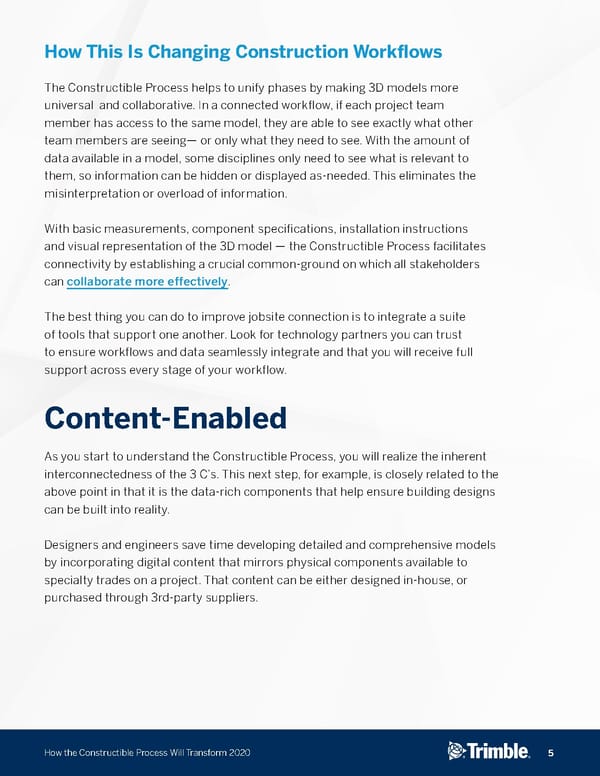How the Constructible Process Will Transform 2020 5 The Constructible Process helps to unify phases by making 3D models more universal and collaborative. In a connected workflow, if each project team member has access to the same model, they are able to see exactly what other team members are seeing— or only what they need to see. With the amount of data available in a model, some disciplines only need to see what is relevant to them, so information can be hidden or displayed as-needed. This eliminates the misinterpretation or overload of information. With basic measurements, component specifications, installation instructions and visual representation of the 3D model — the Constructible Process facilitates connectivity by establishing a crucial common-ground on which all stakeholders can collaborate more effectively . The best thing you can do to improve jobsite connection is to integrate a suite of tools that support one another. Look for technology partners you can trust to ensure workflows and data seamlessly integrate and that you will receive full support across every stage of your workflow. How This Is Changing Construction Workflows Content-Enabled As you start to understand the Constructible Process, you will realize the inherent interconnectedness of the 3 C’s. This next step, for example, is closely related to the above point in that it is the data-rich components that help ensure building designs can be built into reality. Designers and engineers save time developing detailed and comprehensive models by incorporating digital content that mirrors physical components available to specialty trades on a project. That content can be either designed in-house, or purchased through 3rd-party suppliers.
 Constructible Process Page 4 Page 6
Constructible Process Page 4 Page 6